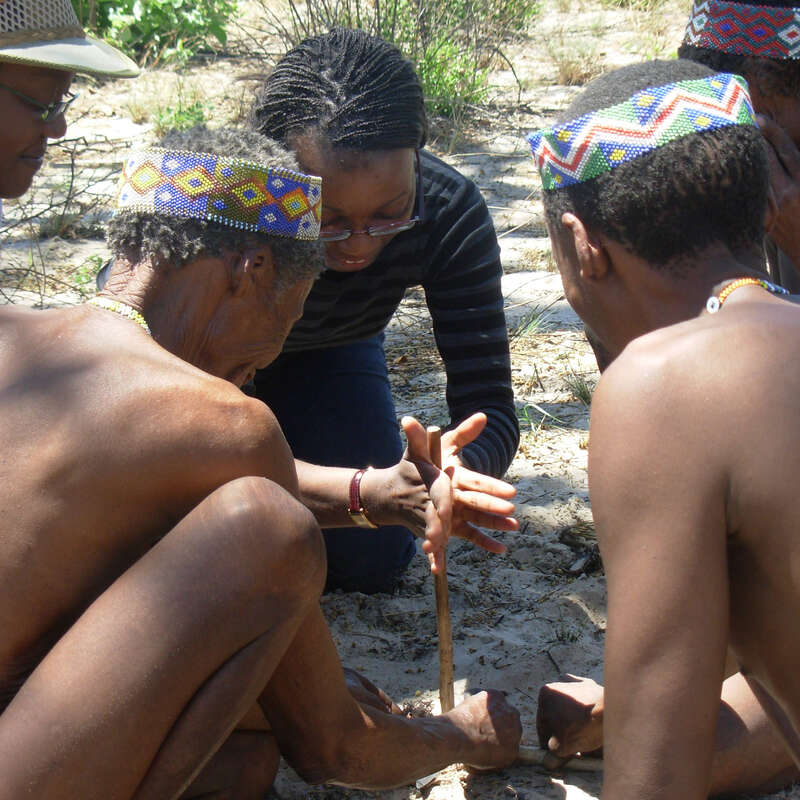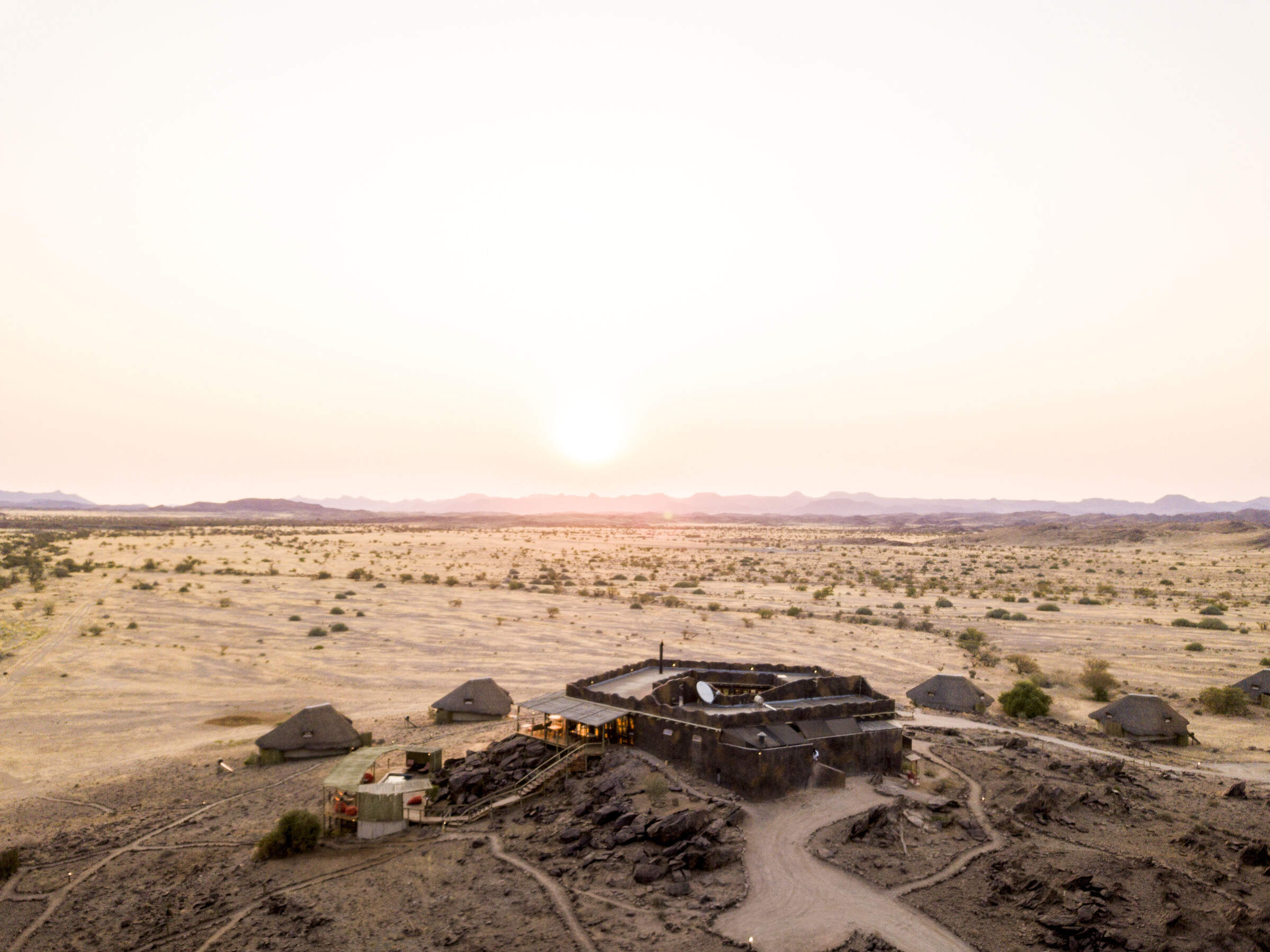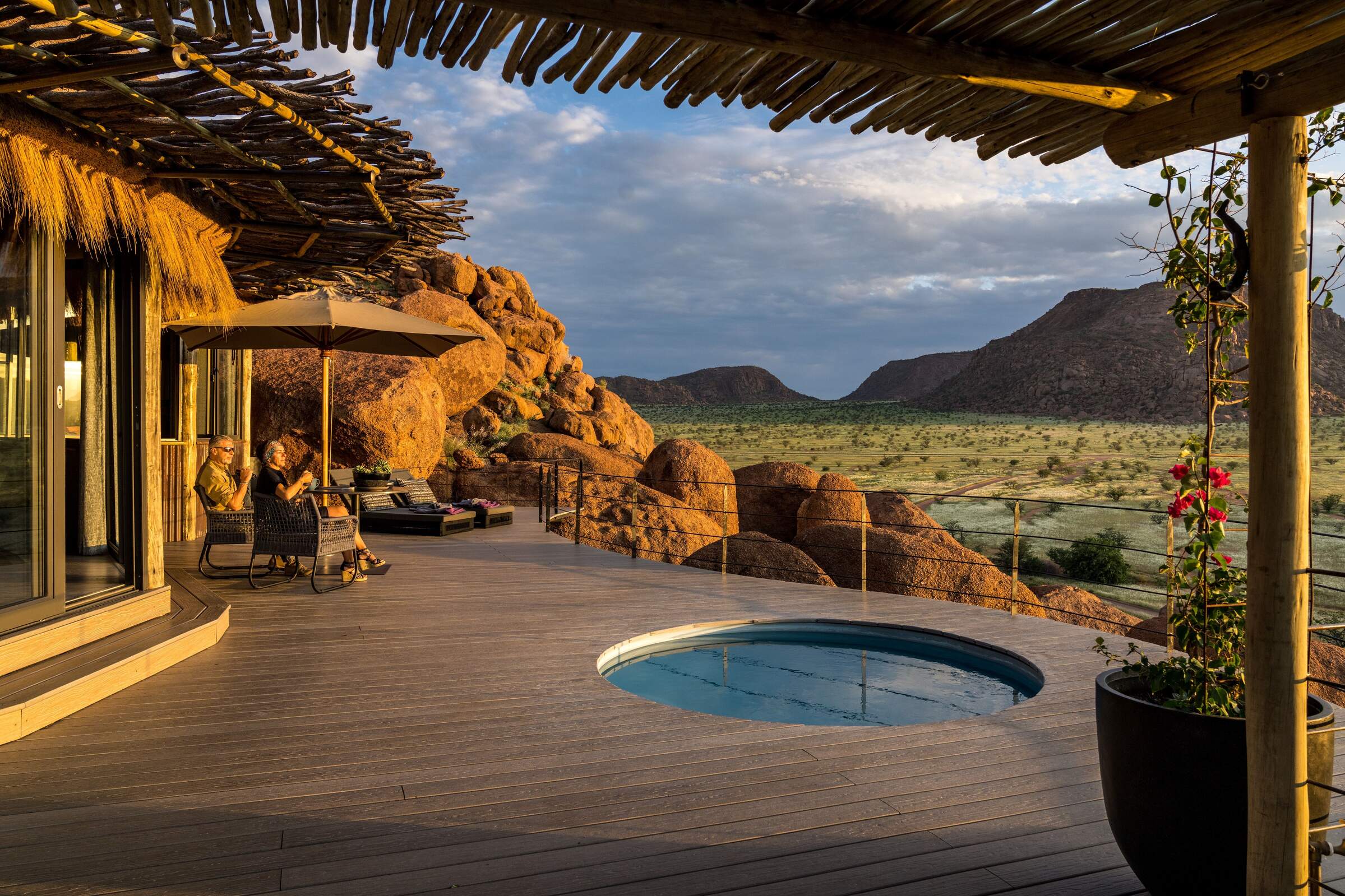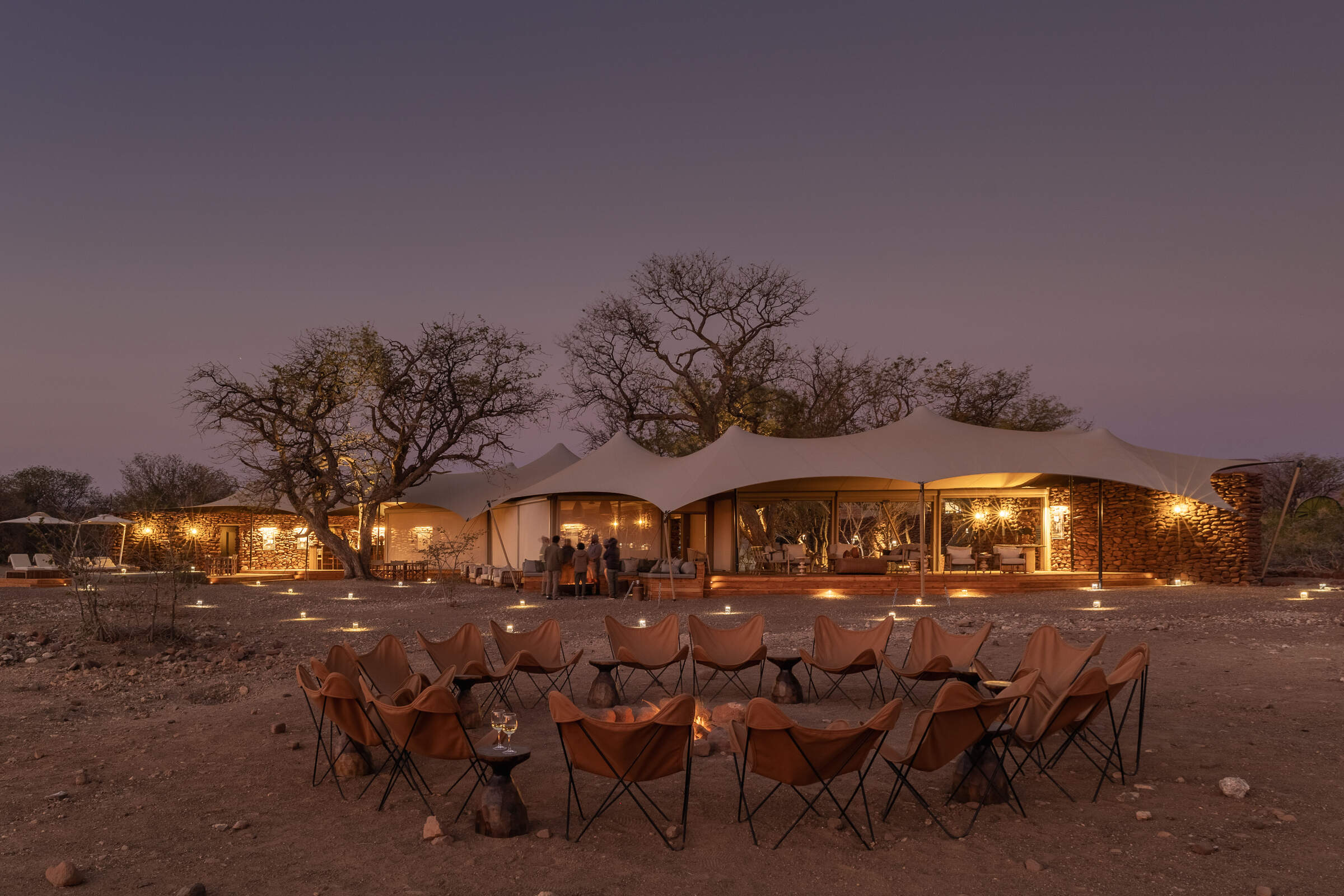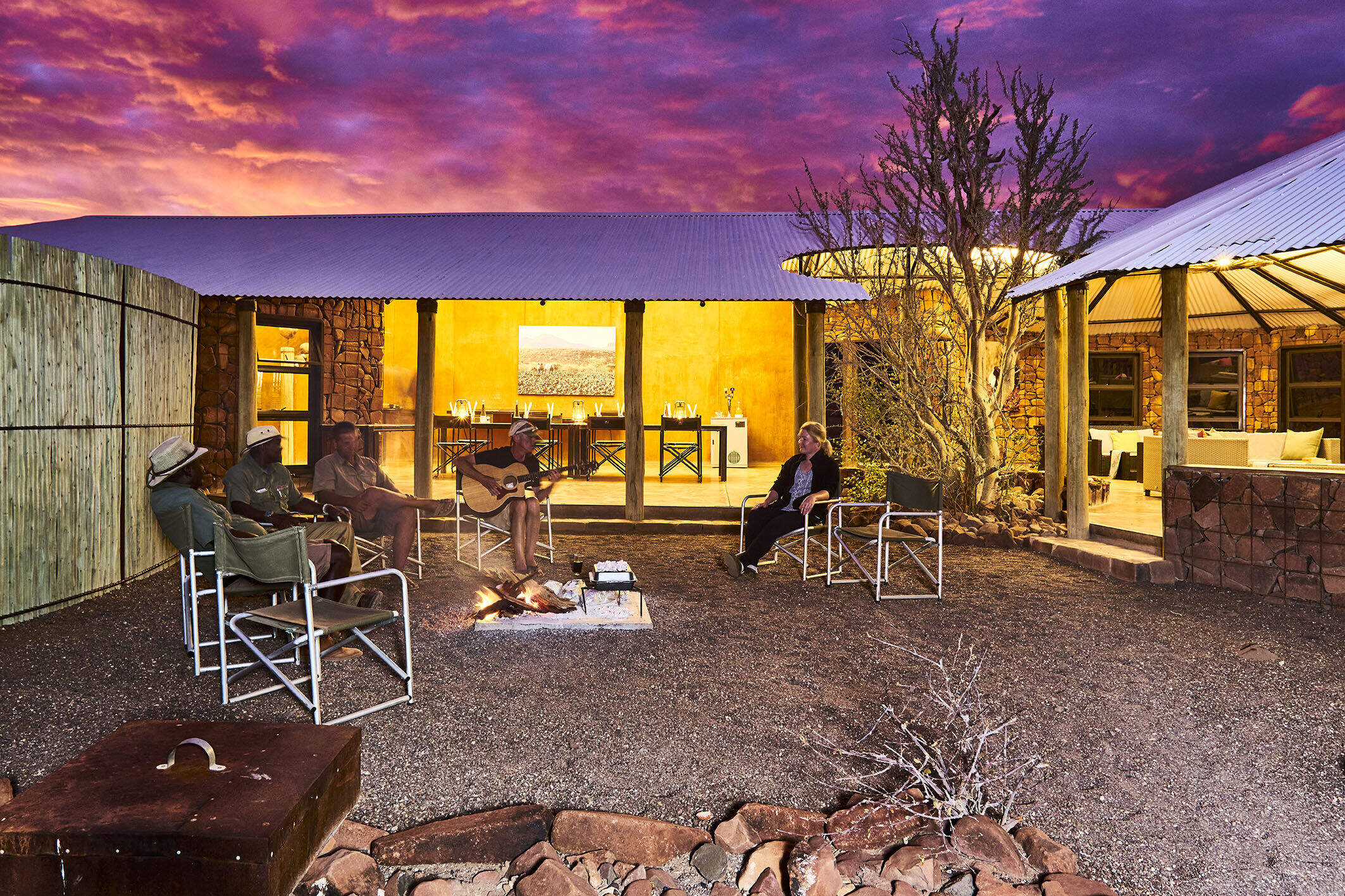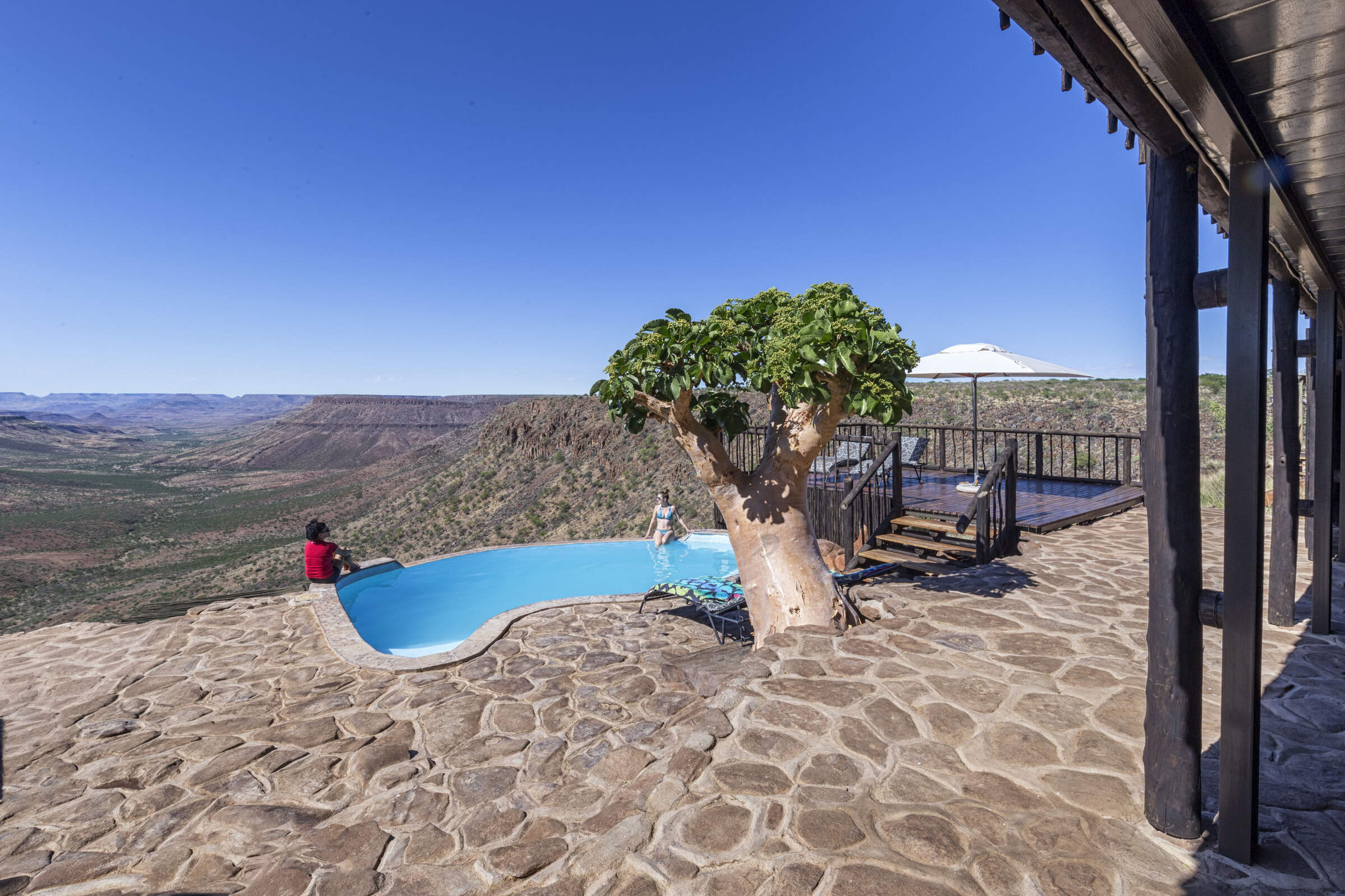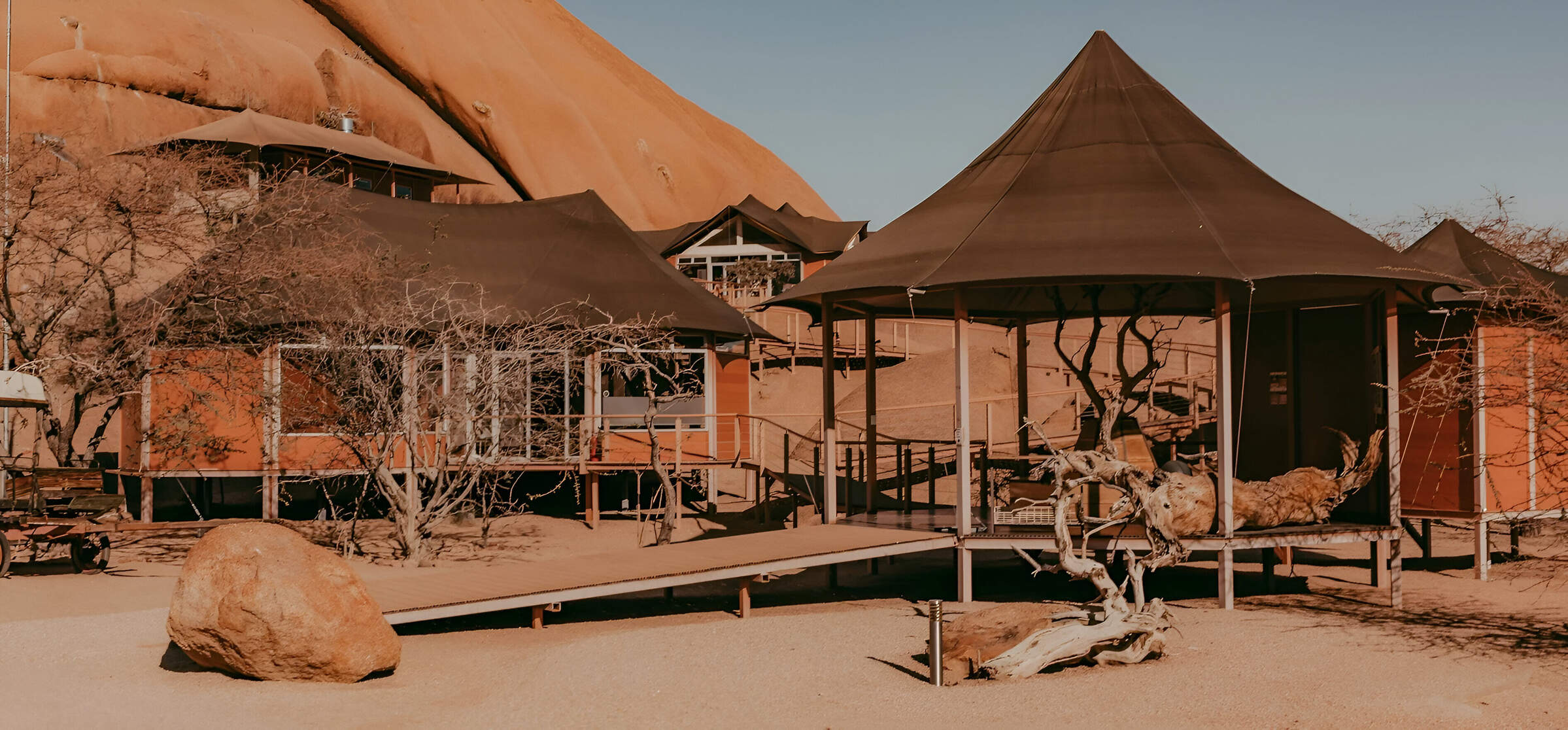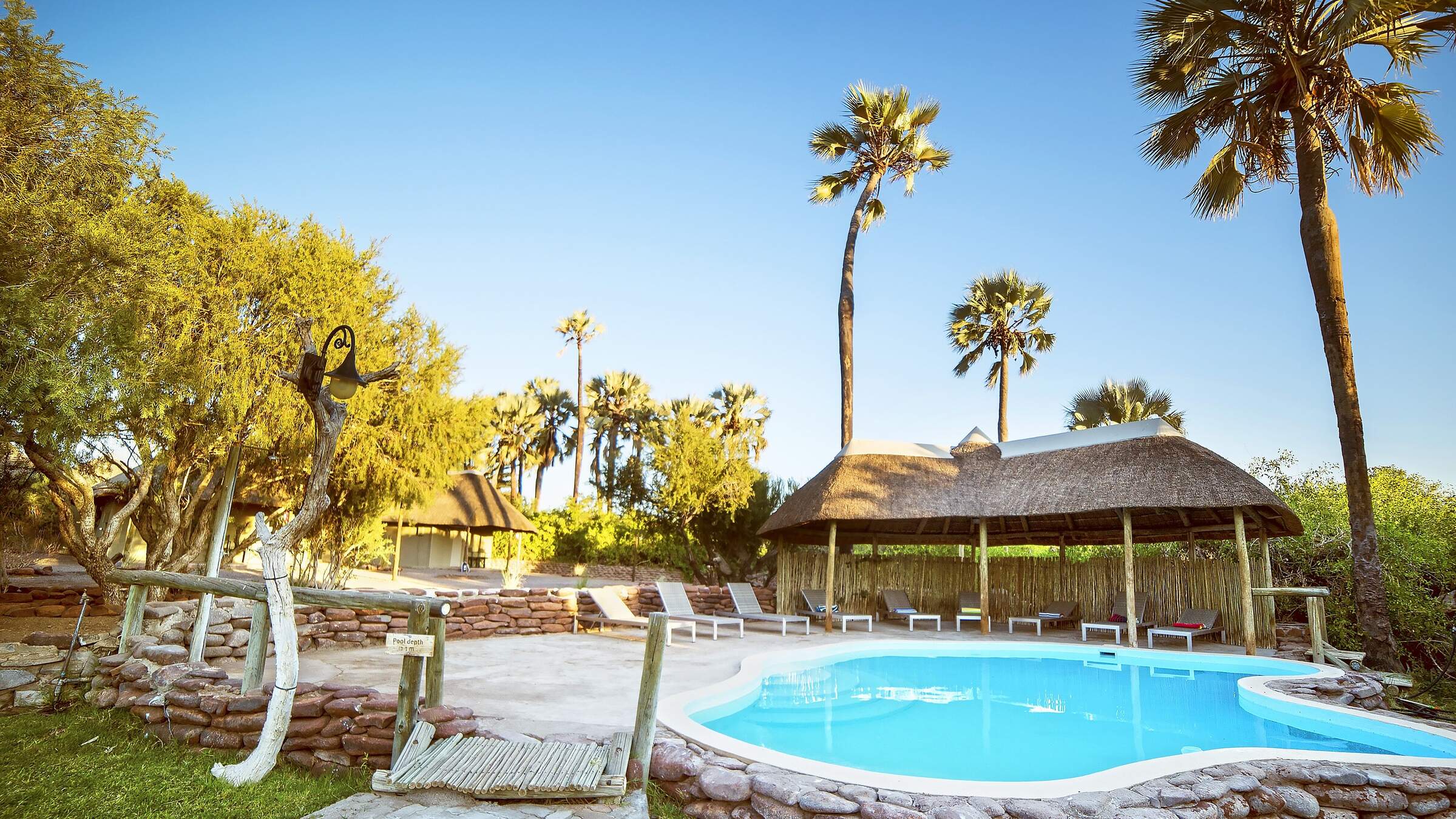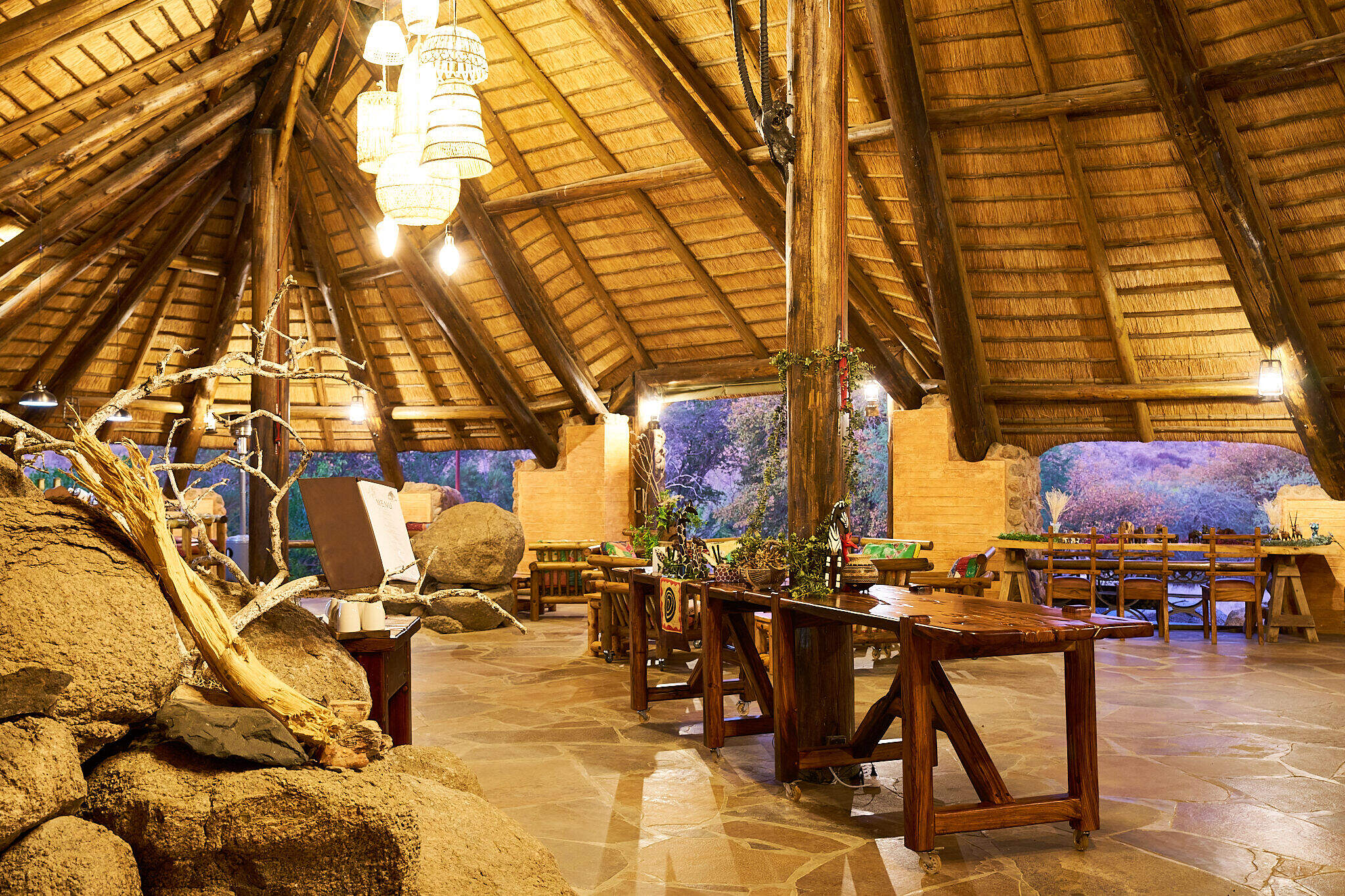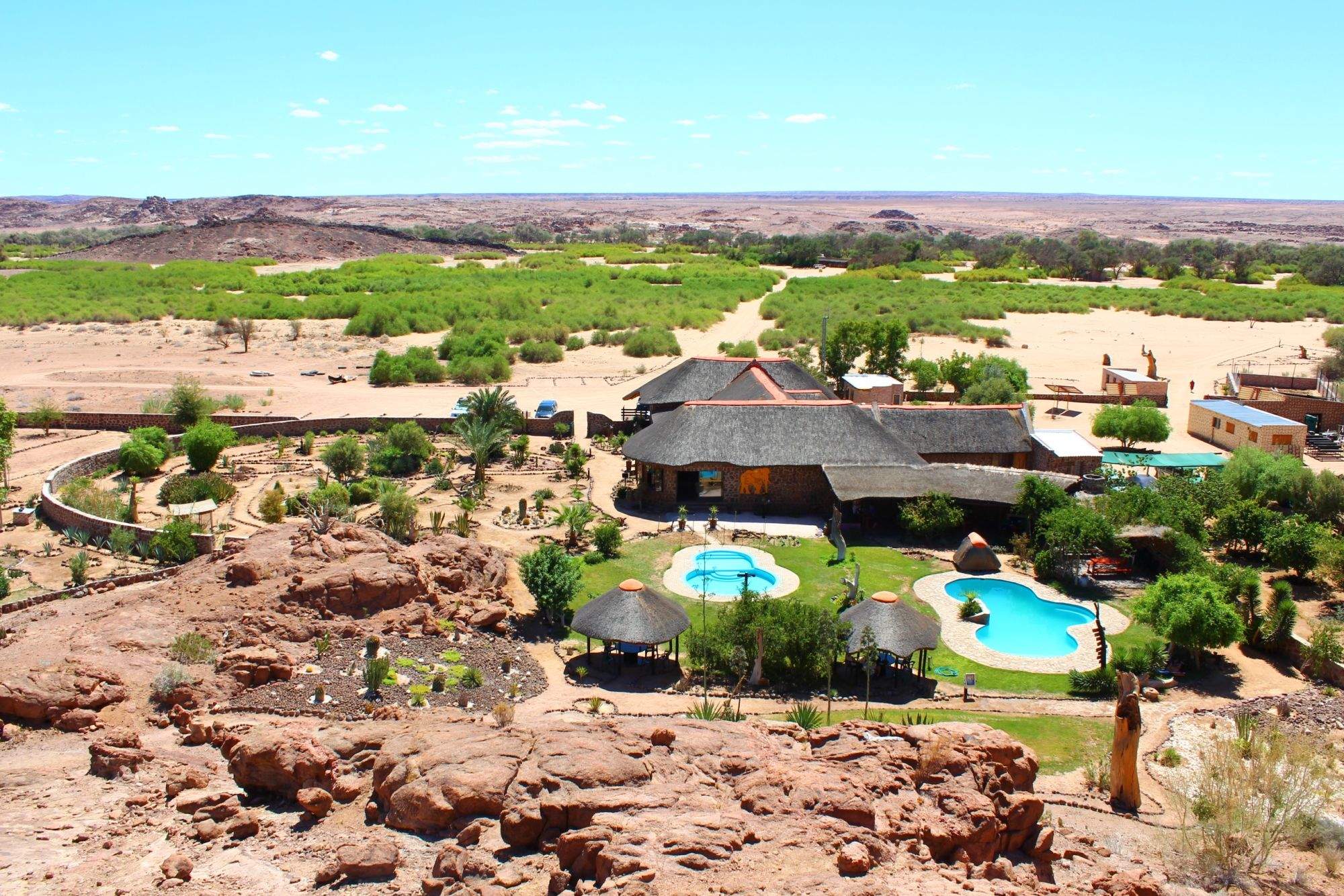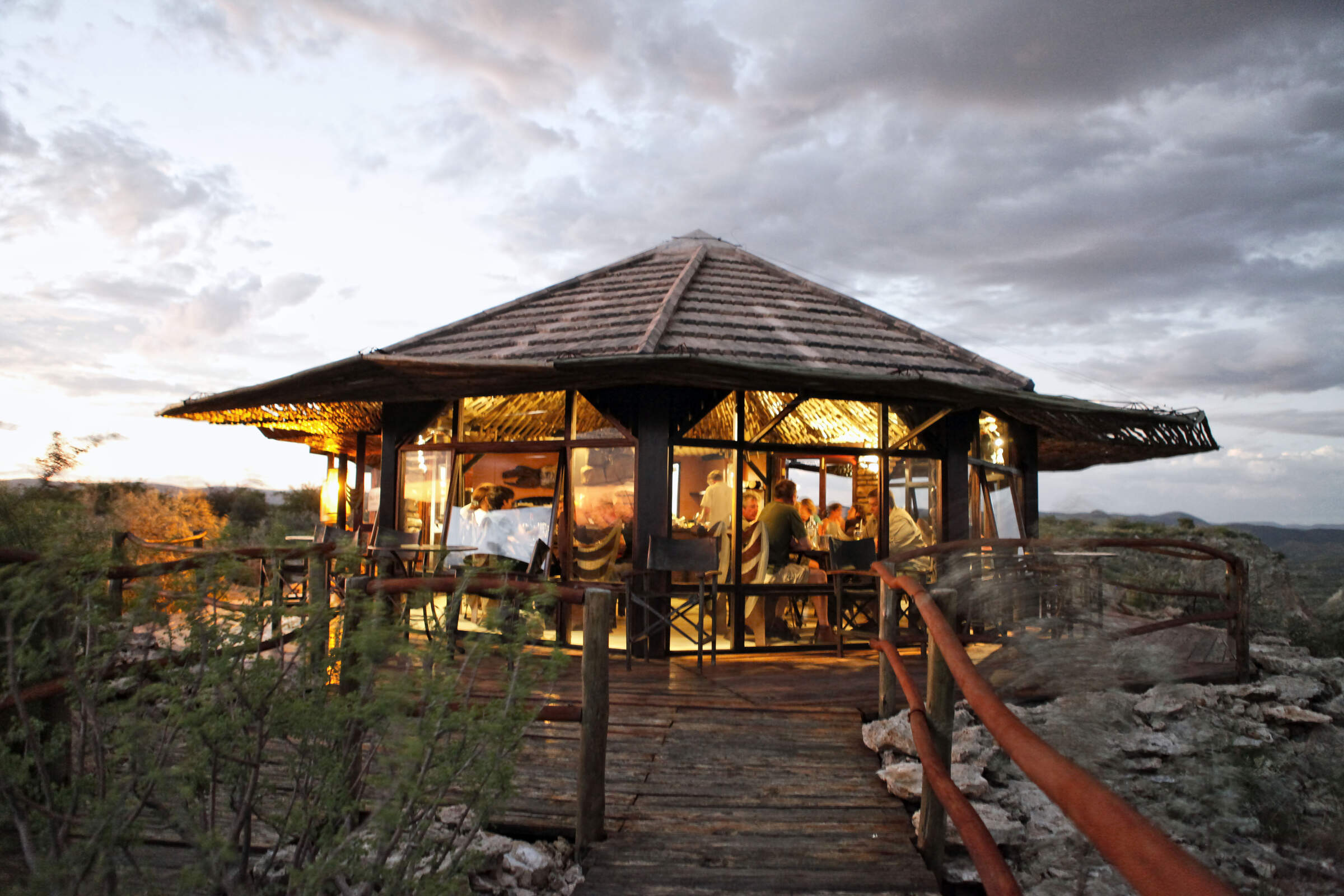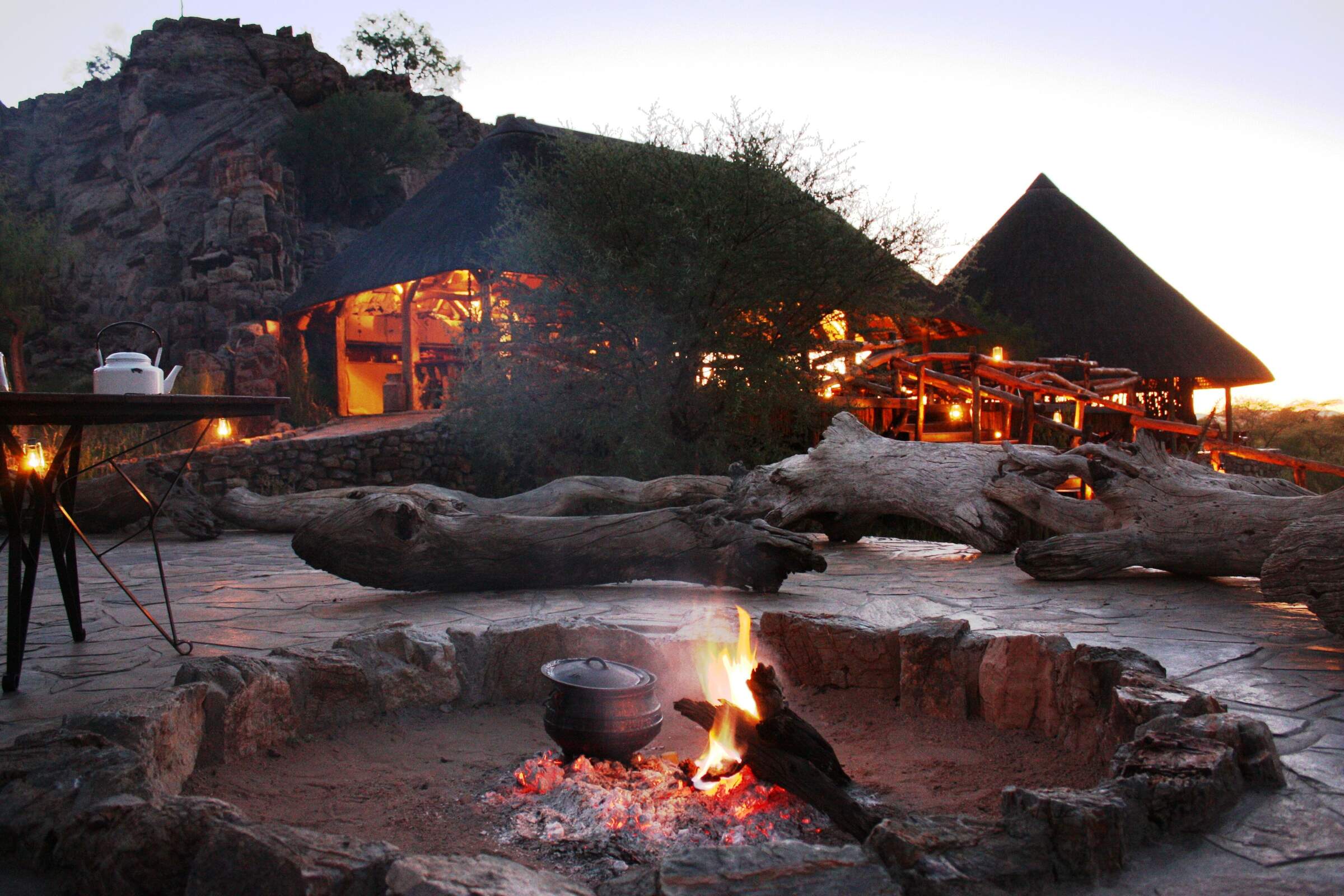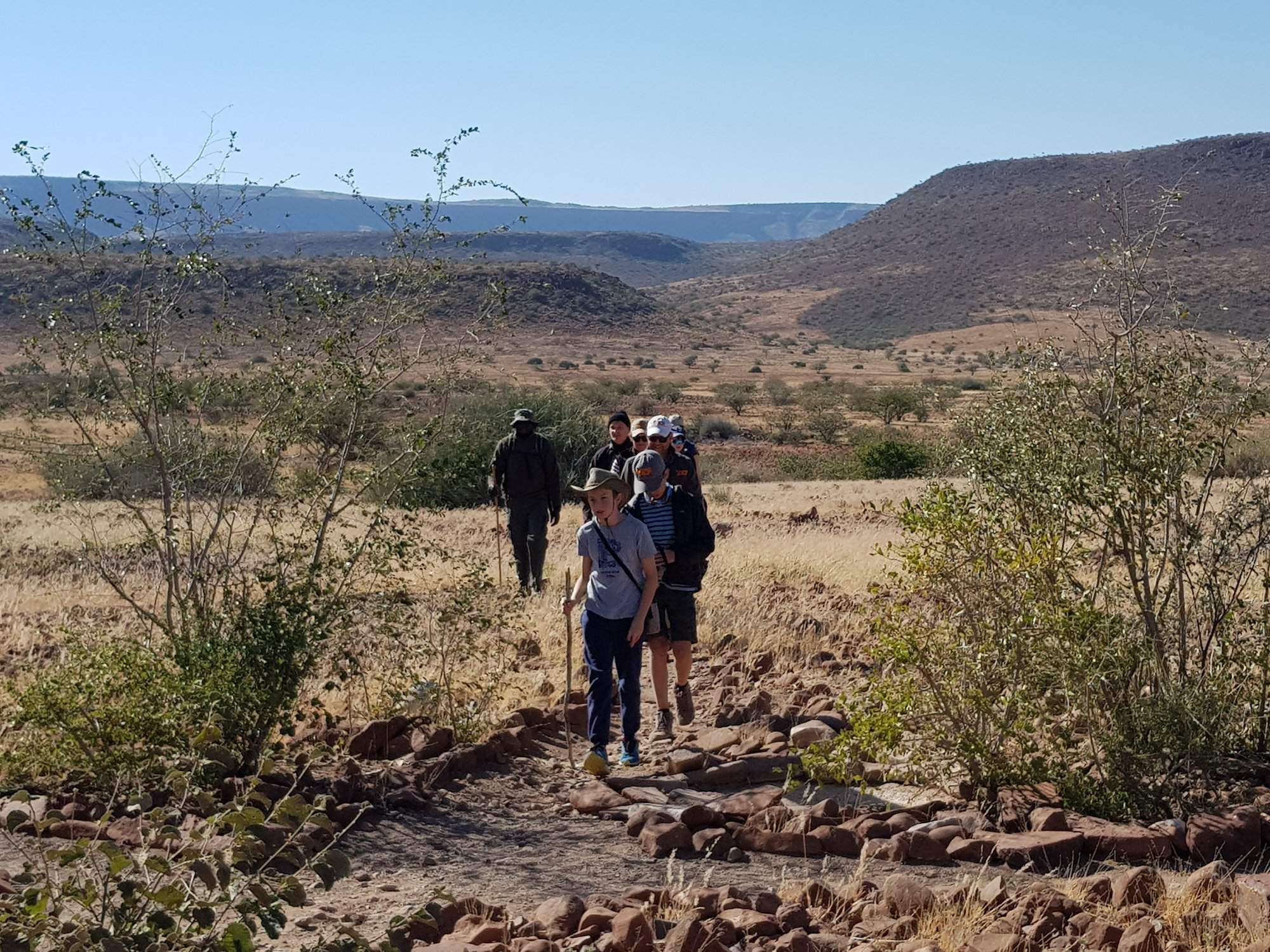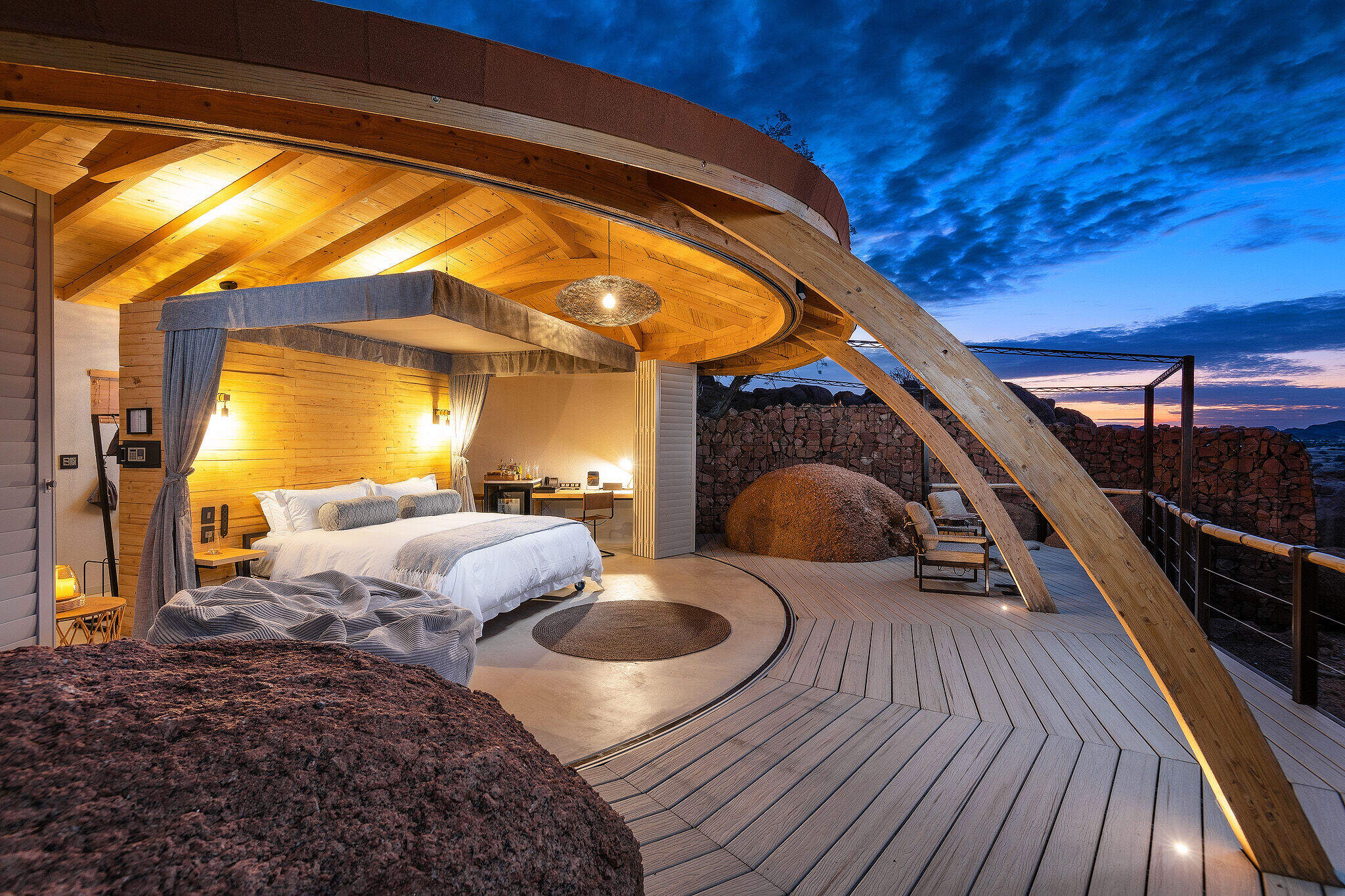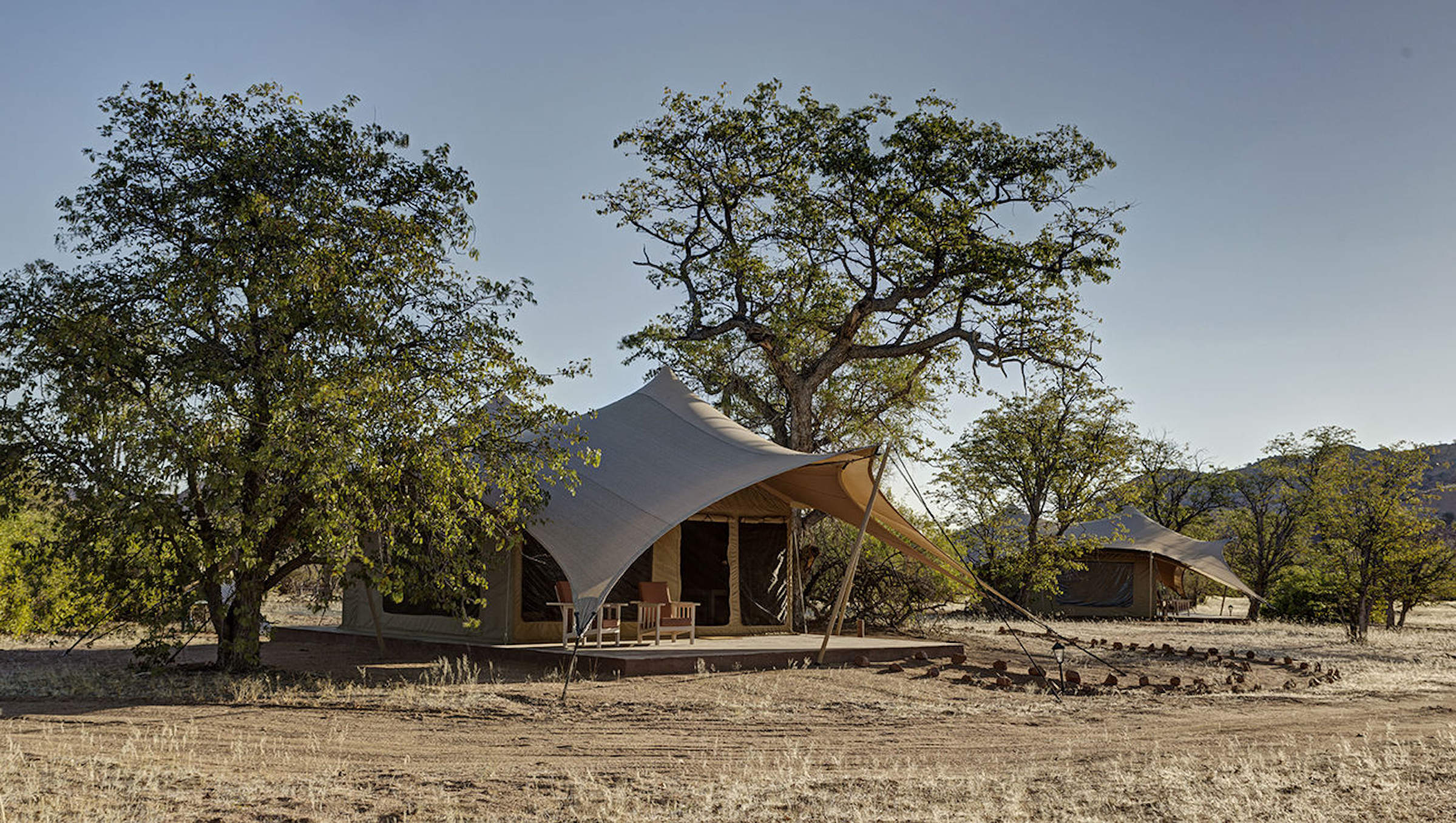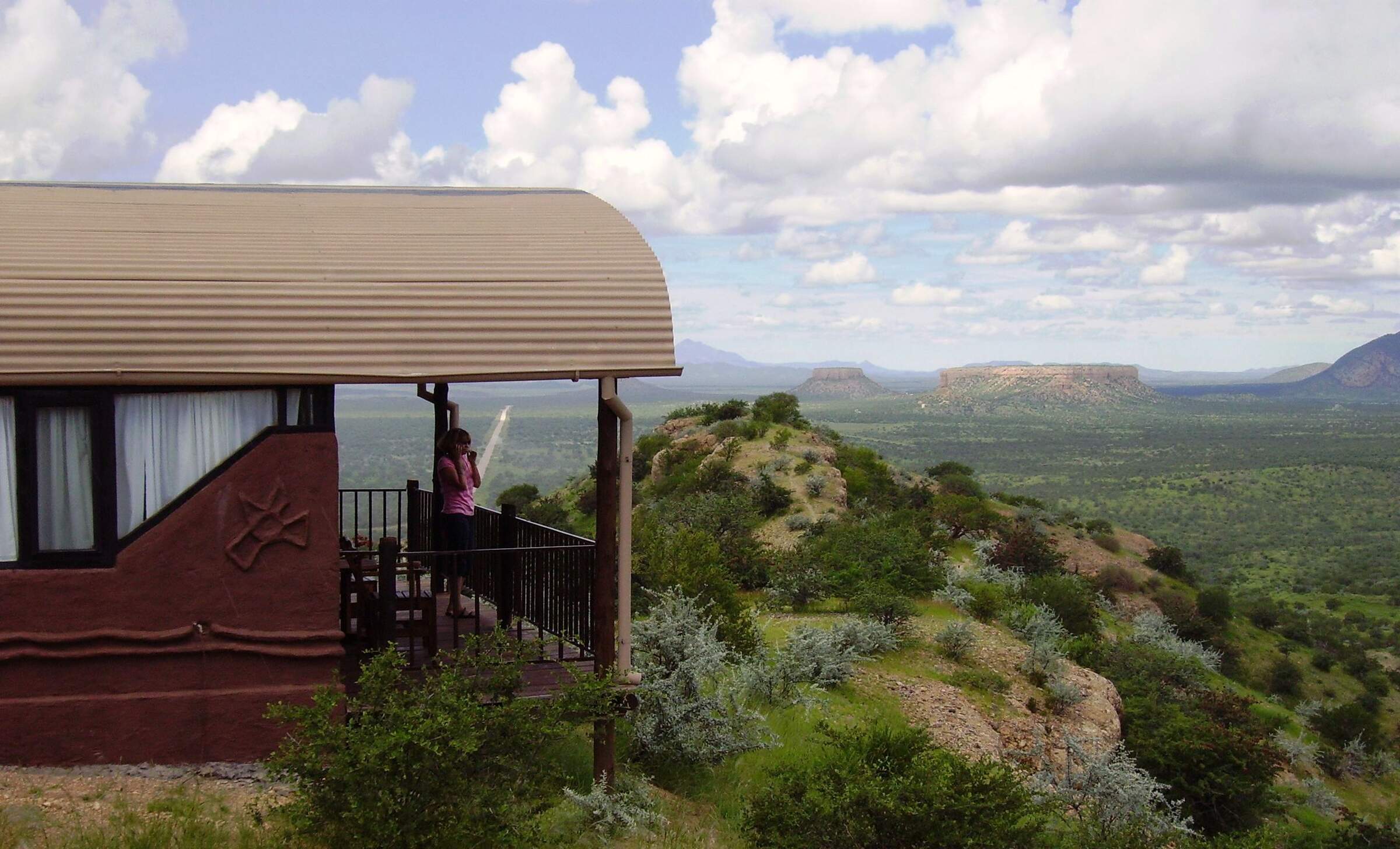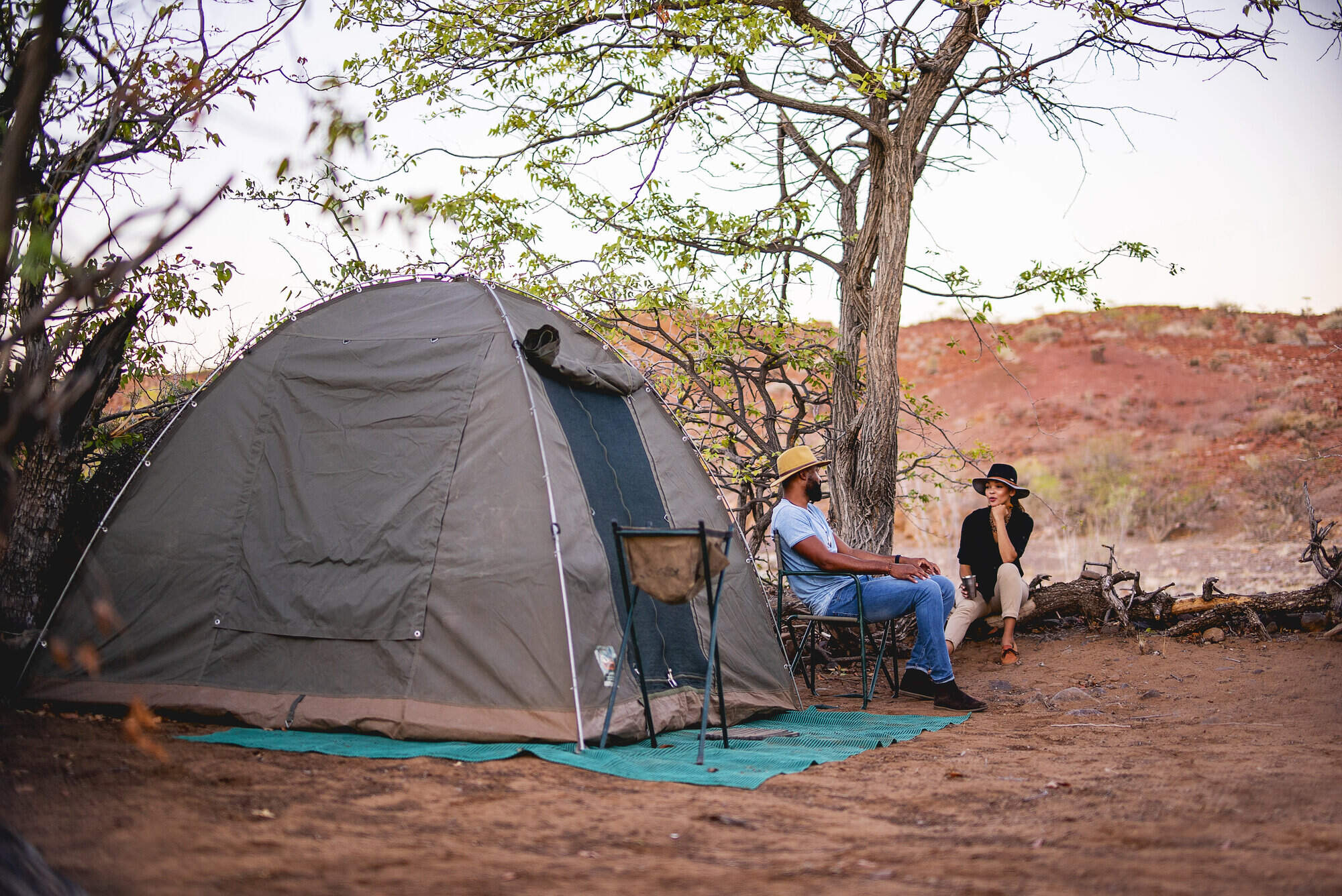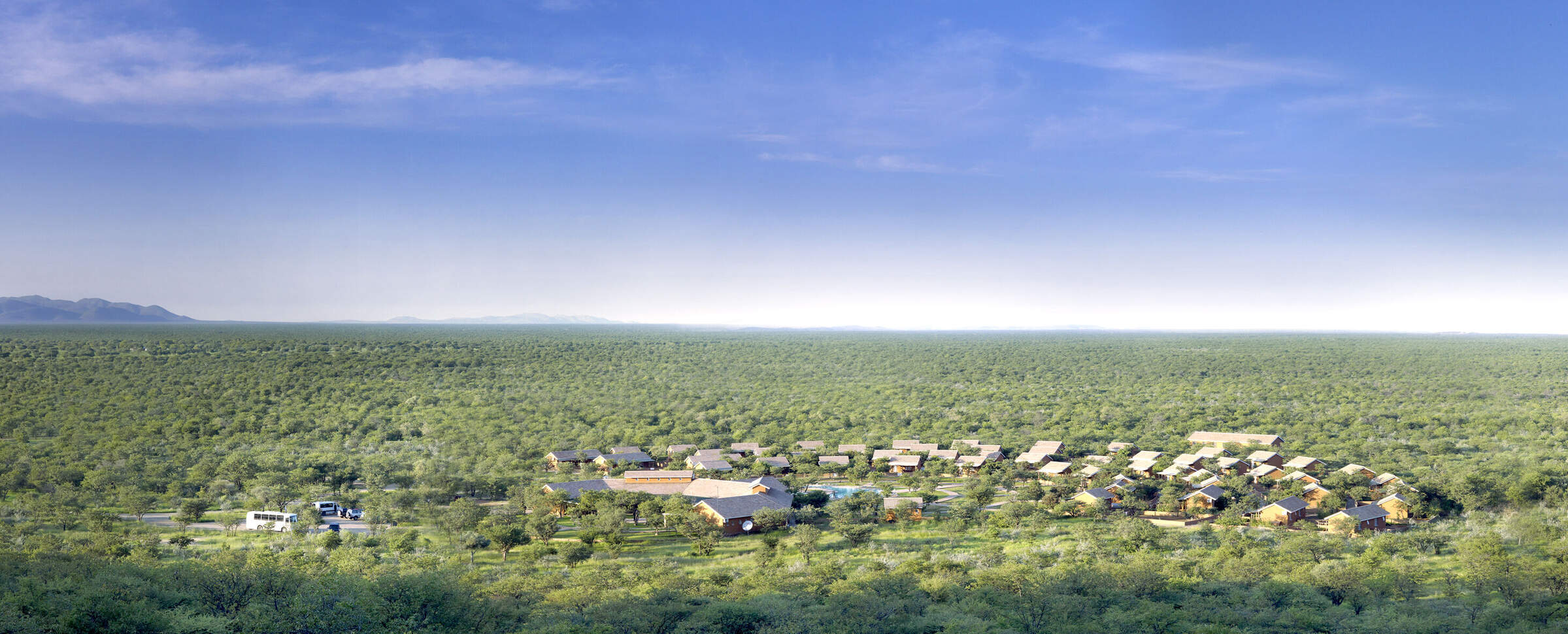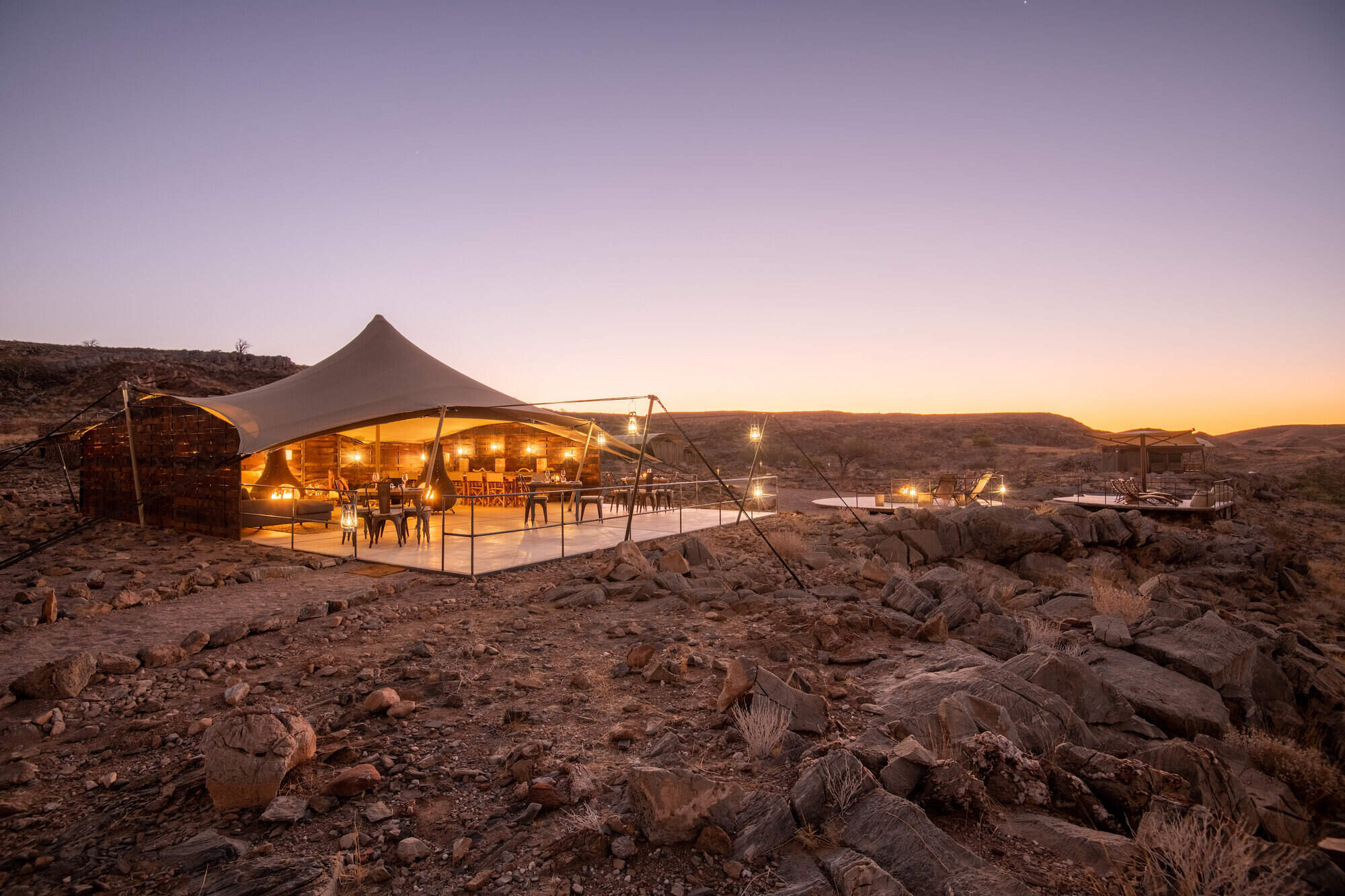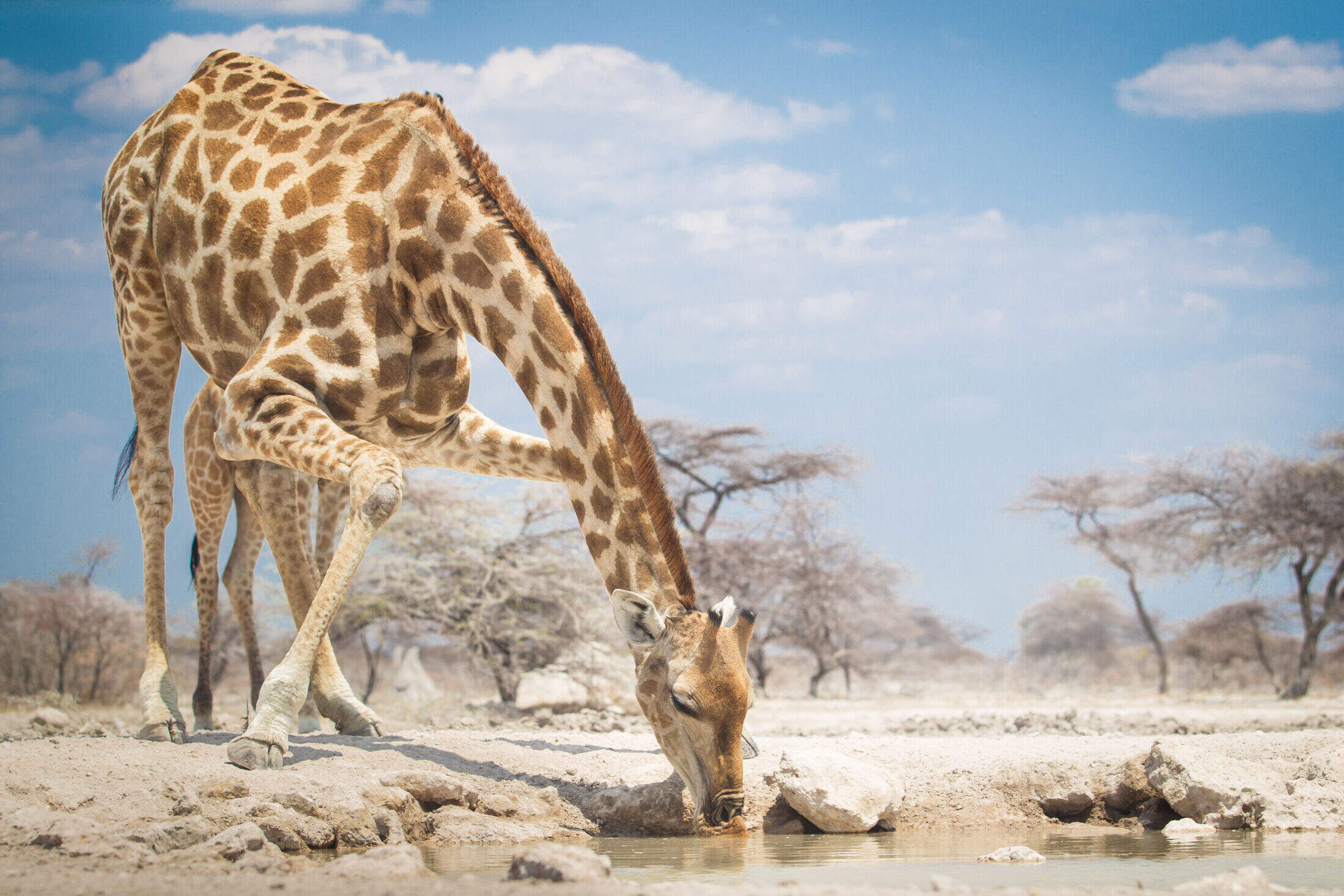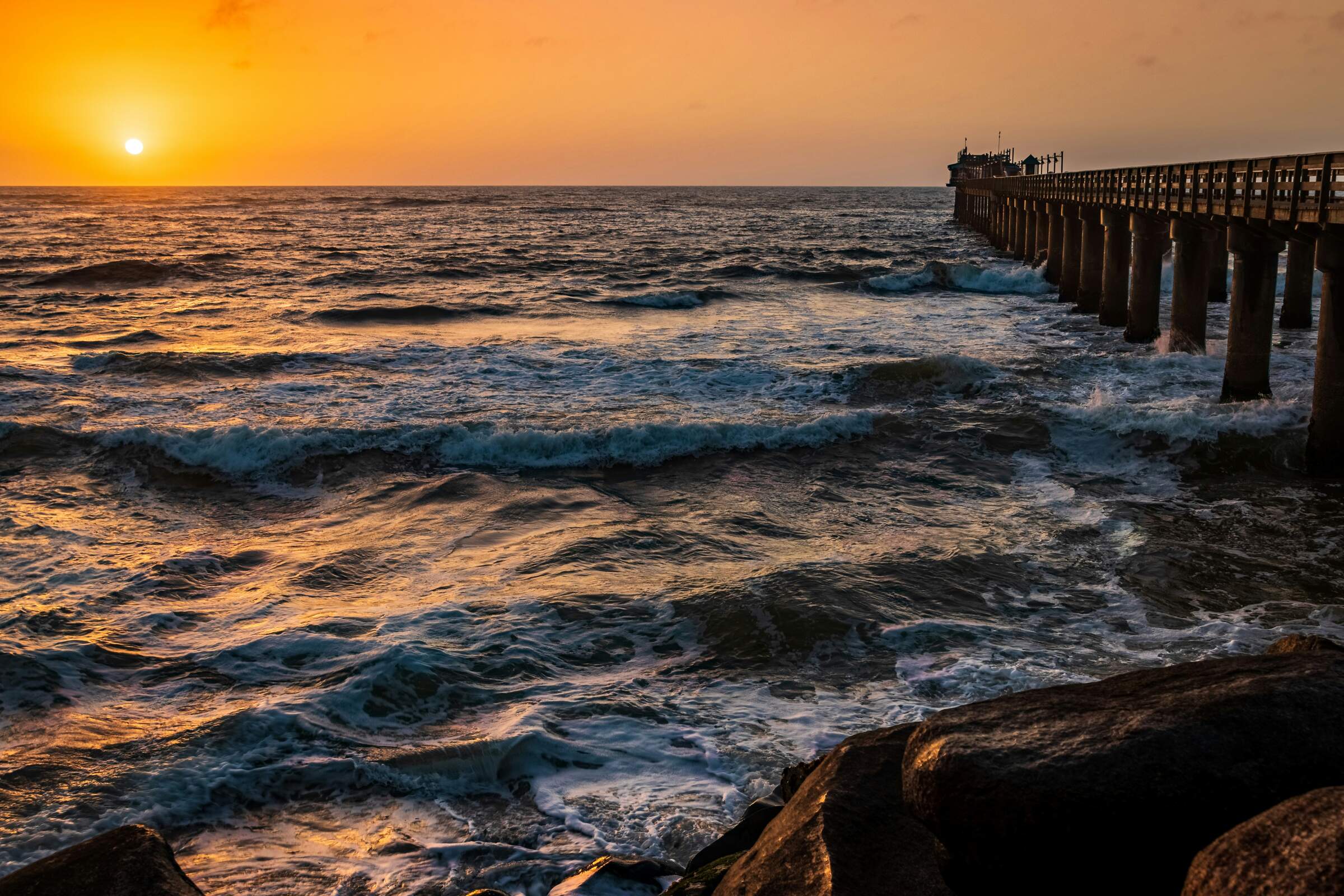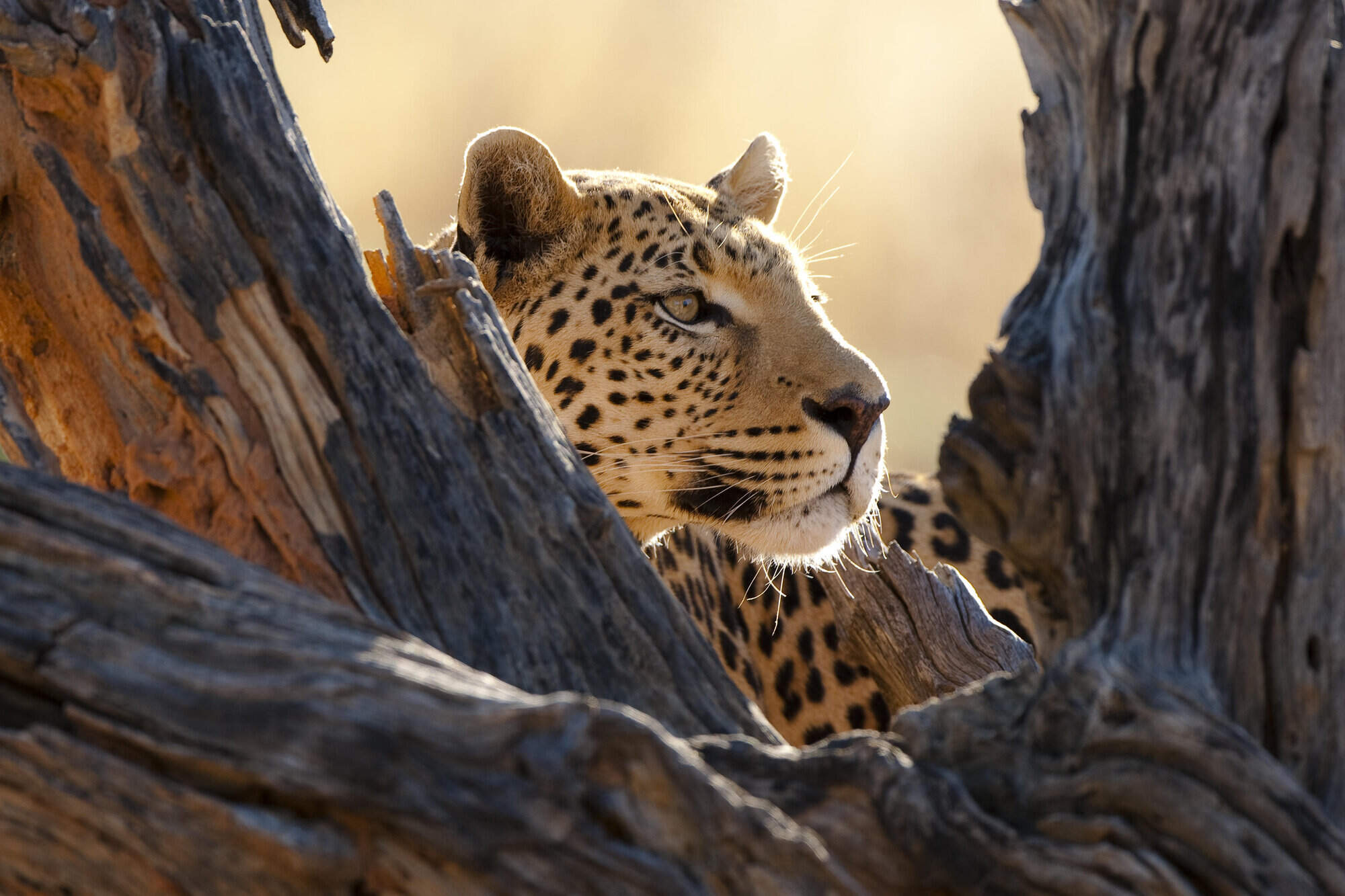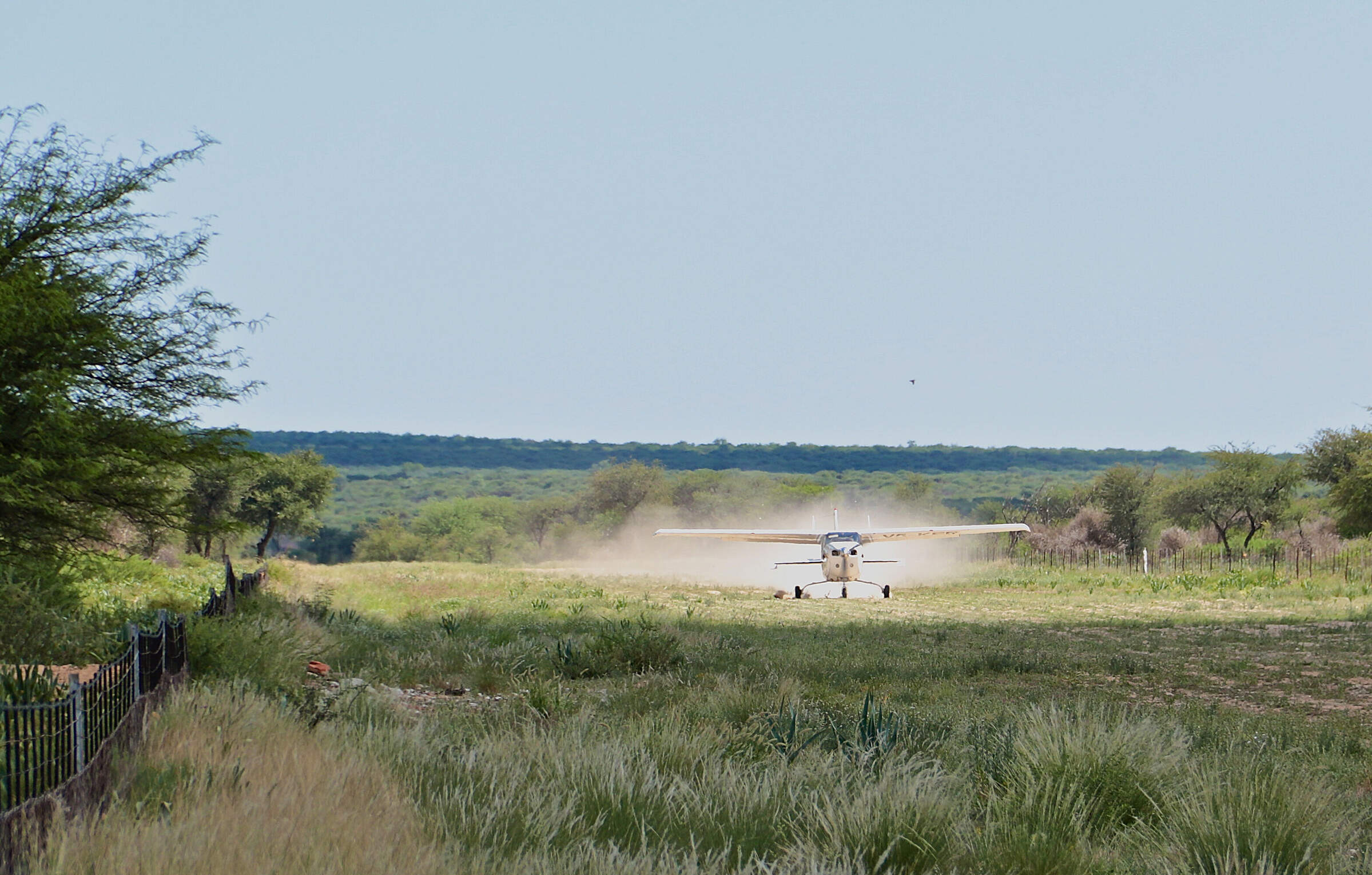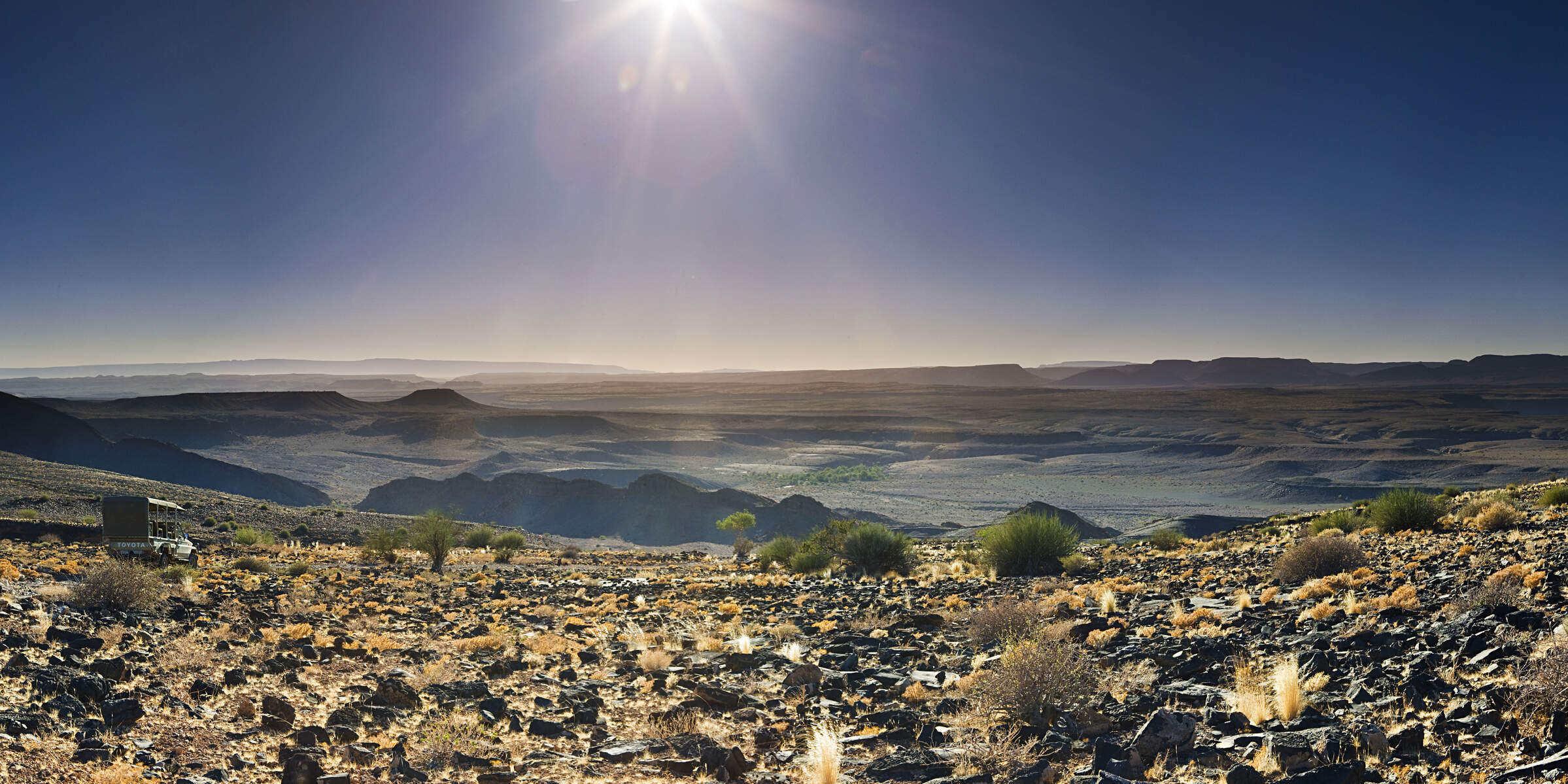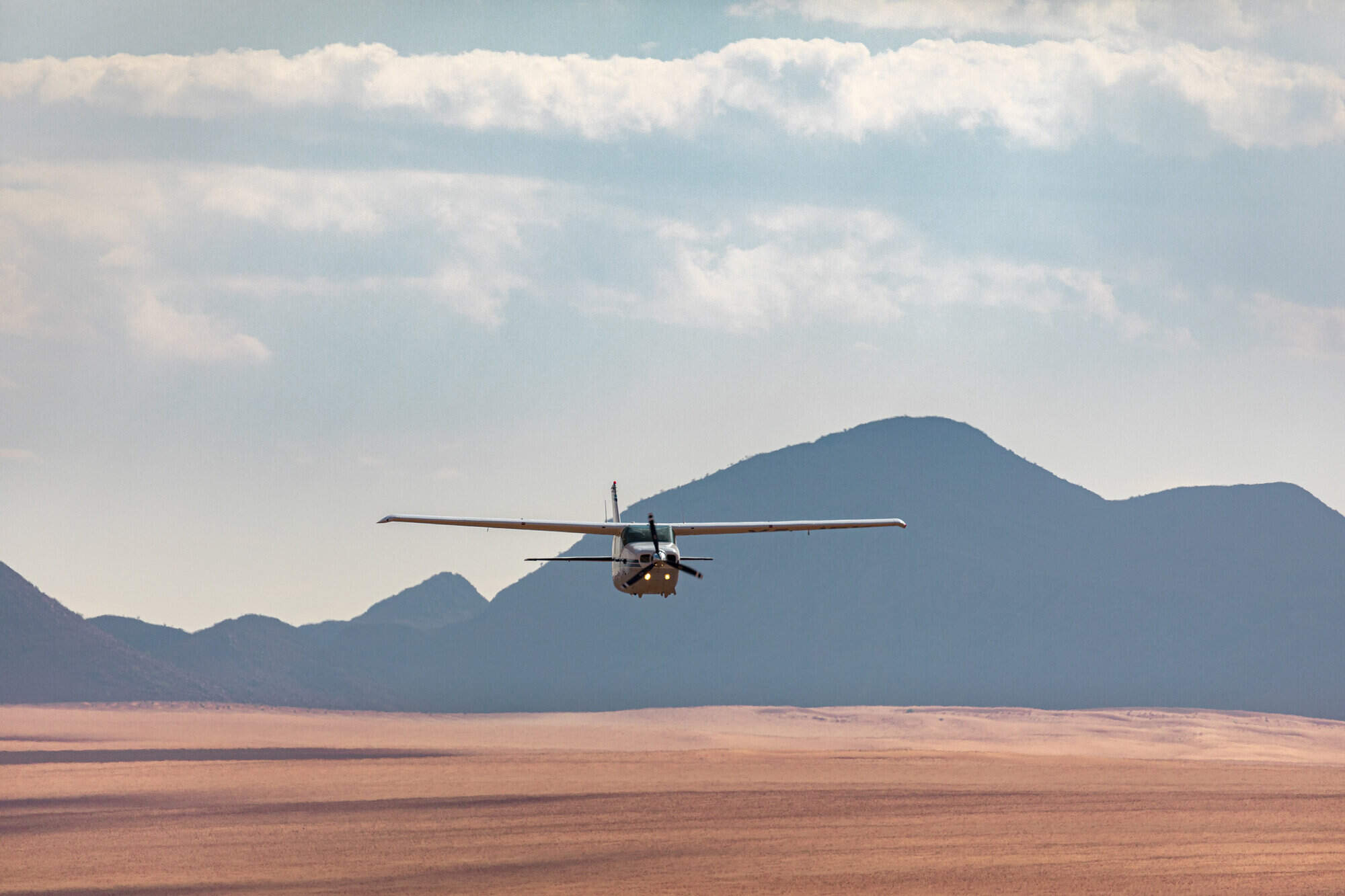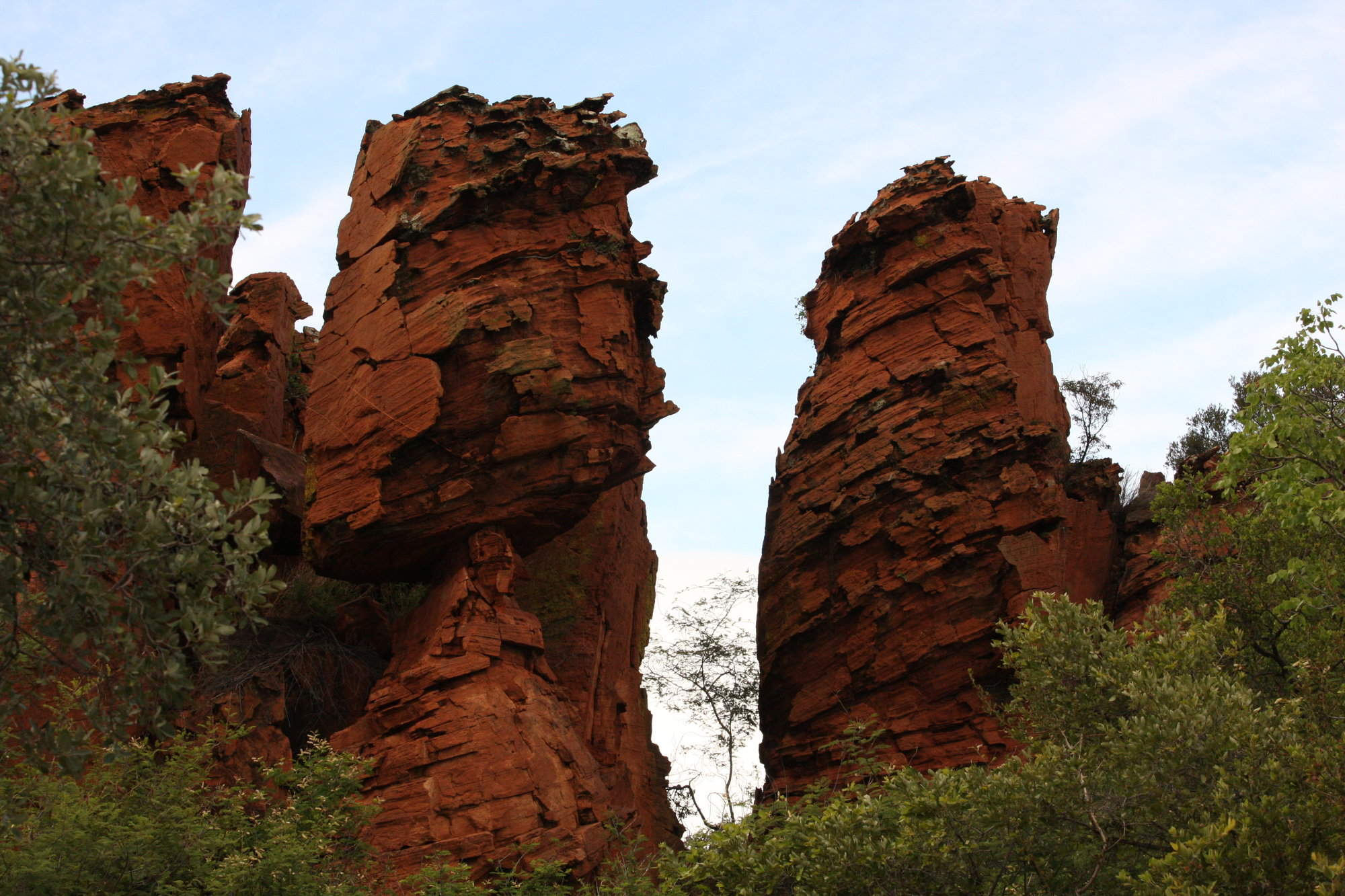Ozondjou Trails: Our full report
Ozondjou Trails is nestled among the hills of southern Damaraland, not far from the mighty Brandberg Mountain.
Opened in September 2016, it was the first permanent camp from a team with a strong history of running excellent mobile safaris across Namibia. The camp’s name is derived from a Herero word for “elephant”: apt given its proximity to the NGO, Elephant Human Relations Aid (EHRA). Staying here not only affords the opportunity to learn about and see the area’s desert-adapted pachyderms, but also benefits them by supporting EHRA projects including education programmes and efforts to mitigate human–wildlife conflict.Ozondjou Trails has nine twin tents well-spaced across Damaraland’s undulating terrain. Each Meru-style tent is covered with shade netting to help mitigate the impact of Namibia’s hot sun and is accessed by a small porch with two comfortable camping chairs.
Inside, the bedrooms contain simple furniture including a luggage rack, twin beds and bedside tables with reading lights, mosquito repellent spray and an emergency horn. Large gauze windows can be sealed against the elements with zipped canvas covers, or left open to allow the breeze in, along with the sounds and smells of the bush. As the camp runs on solar power, there are no charging points in the rooms and the lighting is quite dim, so it’s a good idea to take a head torch. There is a charging station in the main area for use during daylight hours.
To the back of each tent, you’ll find an en-suite shower, washbasin and flush toilet. Here, as in the bedroom, space is utilised well, providing travellers with everything they need with little fuss. Do note, however, that the water is heated by solar geyser, so it is not infinite, especially in the early mornings.
During our stay in May 2022, we thoroughly enjoyed the stripped back experience at Ozondjou Trails – you can tell that the team behind the lodge has a history of running mobile safaris. That said, the rooms here are not as luxurious as some of the other options in the wider Damaraland area, and –despite the provision of additional blankets – we couldn’t help feeling that the tents might get rather cold in the winter nights (Jul–Sept). Similarly, even with the shade netting and large windows, we suspect they’ll get rather hot in October–December.
A series of winding, sometimes rough, and occasionally steep dirt paths connect the tents to the main area. Perched on the edge of a gorge overlooking the ephemeral Ugab River, the main structure is a large, open-plan, L-shaped thatched building. Inside you’ll find a big communal dining table, several seating areas, a tea and coffee station and an honesty bar/fridge. Weather permitting, dinner may be served under the stars, which we think would be a magical experience.
Although the structure is mostly open sided, the few walls are adorned with posters produced by EHRA. Some give general information on elephants and their behaviour; others explain how to identify individual elephants and give details on herds you might see.
In front of the main building is a sandy area used for outside dining and braais (BBQs). With a commanding view of the ephemeral river below this is where you’ll also find the camp’s firepit. Here you’ll start the day with an early morning coffee and a rusk, or unwind with a cool drink at the end of a hot day as you keep an eye out for desert wildlife searching for food and water in the riverbed below.
The camp itself is proud of its green credentials: they tell us that it is built in such a way that it could be taken down or relocated at any time with no lasting effect on the environment, and we can believe it. All power is solar generated, and water is provided from a solar-powered borehole.
Ozondjou Trails is usually booked as a two-night package to give guests enough time to experience their range of activities. Most guests arrive mid-to late-afternoon, then – after checking in and orientating themselves – depart on a guided tour. This starts at a local village/farm where the farmer will explain the challenges of living and working in an area with free-roaming wildlife. It then continues to a local school (during term time) before ending with a short walk and sundowners.
The following day you’ll be up early to head out with the EHRA team on a 4WD vehicle as they track and study the area’s desert-adapted elephants. While elephants are the main focus of this trip, travellers may also see plains game such as zebra, kudu, oryx, springbok, ostrich and giraffe. This can be a long day depending on where the herds are, so you’ll usually travel with a packed lunch, returning to camp mid- to late-afternoon. During our visit, we were lucky enough to find a couple of different breeding herds as well as a lone male on musth. Throughout this activity, we were impressed by the passion and knowledge of the EHRA team, who were eager to share their intimate knowledge of the region and its wildlife.
An added bonus is that the area around Ozondjou is relatively quiet, so we’d expect that travellers staying here would usually see fewer vehicles from other camps than in areas further north around Twyfelfontein.
Our view
Although Ozondjou Trails is a permanent camp, the style, from its simple tents to the relaxed hosting, gives it a stripped back, intimate safari experience akin to camping out in one of Namibia’s wilder areas. The focus here is firmly on the surrounding wilderness and its nomadic desert-adapted wildlife, especially elephants.
Geographics
- Location
- Damaraland, Namibia
- Ideal length of stay
- 2 nights
- Directions
- The camp is situated 4km off the C35 on the road between Uis and Khorixas.
- Accessible by
- Self-drive
Food & drink
- Usual board basis
- Full Board & Activities
- Food quality
- Although Ozondjou Trails is a fairly rustic camp, we enjoyed some excellent food during our stay in May 2022. While we were the only guests in camp at the time, we understand that meals are usually enjoyed communally. With advance notice, most dietary requirements can be catered for.
Our breakfast was a buffet of cereals, fruit, juice, tea, coffee and muffins. Hot dishes of bacon, eggs, sausages, tomatoes and omelettes are cooked to order.
During our brief stay, we didn’t have a chance to enjoy lunch at Ozondjou, but we understand that on the day spent tracking elephants with EHRA, guests are usually provided with a packed lunch. We’d expect this to contain a sandwich, fruit, juice, water and perhaps a muffin, or crisps. Packed lunches can also be requested for the day you depart, for an additional charge.
For dinner we enjoyed a four-course meal which started with butternut soup with fresh bread rolls, followed by a Greek-style salad. Our main course was an excellent chicken roulade served with seasonal roast vegetables and mashed potatoes. Finally, the meal was rounded off with a chocolate mousse with passion fruit sauce.
Overall, we were impressed with the innovative and varied options for our dinner, especially as they were produced by a small team in a simple kitchen. - Dining style
- Group Meals
- Dining locations
- Indoor and Outdoor Dining
- Further dining info, including room service
- None
- Drinks included
- House drinks are included.
Special interests
- Cultural experiences
- Many travellers visit Damaraland to seek out the area's desert-adapted wildlife. Ozondjou Trails not only offers this opportunity but also gives an insight into the life of modern Namibians and the challenges they face of human–wildlife conflict.
- See ideas for Cultural experiences in Namibia
Children
- Attitude towards children
- No children under 16 years are allowed in camp, due to free-roaming elephants.
- Property’s age restrictions
- No children under 16 are allowed to stay here.
- Special activities & services
- None
- Equipment
- None
- Generally recommended for children
- We would not generally recommend Ozondjou Trails for families travelling with children. There is no space in the tents for additional beds for under 18s.
- Notes
- Anyone staying at Ozondjou trails needs to be aware of the risk of wild animals in camp.
Our travellers’ wildlife sightings from Ozondjou Trails
Since mid-2018, many of our travellers who stayed at Ozondjou Trails have kindly recorded their wildlife sightings and shared them with us. The results are below. Click an animal to see more, and here to see more on our methodology.

100% success

50% success

50% success

0% success

0% success

0% success

0% success

0% success

0% success

0% success

0% success
Communications
- Power supply notes
- There are no charging points in the rooms and the 12v lighting is quite dim, so a head torch would be a good idea. There is a charging station in the main area for use during daylight hours.
- Communications
- There is WiFi in the main area of camp but no cellphone signal.
- TV & radio
- None
- Water supply
- Borehole
- Water supply notes
- All bathrooms have plumbed-in basins and showers, with hot and cold running water, and flushing toilets.
Sustainability

Inciting PEACE at the heart of the Namibian desert
Ozondjou Trails Camp actively supports Elephant Human Relations Aid (EHRA) in their efforts to raise awareness about the conflict between local communities and Namibia's desert-adapted elephants, and their aim to create a more informed and peaceful form of cohabitation.
Although wildlife preservation boosts the revenue generated by tourism, it is difficult to instil this feeling of acceptance among local people who have witnessed elephants compromise their homes and cattle. Profit from projects like Ozondjou Trails sponsor many of EHRA's initiatives such as the PEACE mission (People and Elephants Amicably Co-Existing). This is a two-day seminar created to teach local people how to live without fear of elephants. Funding covers fuel costs for transporting locals to the seminars and those of printing materials such as instructive handouts, a certificate of attendance and brochures for self-drive tourists outlining important information about the region and safety tips to follow if they encounter elephants.
Donations from Ozondjou Trails Camp have also contributed to rebuilding classrooms in local schools, dormitories or building amenities such as toilets, libraries and a computer network with donated computers.
Guests are encouraged to engage in the project. They can join EHRA-trained guides for their daily patrol, searching for desert-adapted elephants and studying their behaviour.
See more great sustainability projects in Namibia
Health & safety
- Malarial protection recommended
- Yes
- Medical care
- The nearest hospital is in Khorixas, a drive of approximately 1¼ hours from camp. In an emergency guests can be flown to Windhoek.
- Dangerous animals
- High Risk
- Security measures
- While there is no security on site, the camp staff village is just down the hill in case of an emergency.
- Fire safety
- There are fire extinguishers around camp
Activities
4WD Safari
Birdwatching
Cultural excursion
Guided walking safari
Extras
- Disabled access
- On Request
- Laundry facilities
- There is no laundry service here.
- Money
- Unusually, there are no safes in the rooms at Ozondjou Trails.
- Accepted payment on location
- Any payments for additional activities or packed lunches must be made in cash using Namibian dollars or South African rand only.
Other lodges in Damaraland
Alternative places to stay in this same area.

